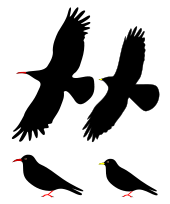
The red-billed chough, Cornish chough or simply chough, is a bird in the crow family, one of only two species in the genus Pyrrhocorax. Its eight subspecies breed on mountains and coastal cliffs from the western coasts of Ireland and Britain east through southern Europe and North Africa to Central Asia, India and China.

The Alpine chough or yellow-billed chough is a bird in the crow family, one of only two species in the genus Pyrrhocorax. Its two subspecies breed in high mountains from Spain eastwards through southern Europe and North Africa to Central Asia and Nepal, and it may nest at a higher altitude than any other bird. The eggs have adaptations to the thin atmosphere that improve oxygen take-up and reduce water loss.

There are two species of passerine birds commonly called chough that constitute the genus Pyrrhocorax of the Corvidae (crow) family of birds. These are the red-billed chough, and the Alpine chough. The white-winged chough of Australia, despite its name, is not a true chough but rather a member of the family Corcoracidae and only distantly related.

The River Camel is a river in Cornwall, England. It rises on the edge of Bodmin Moor and with its tributaries its catchment area covers much of North Cornwall. The river flows into the eastern Celtic Sea between Stepper Point and Pentire Point having covered about 30 miles, making it the second longest river wholly in Cornwall. The river is tidal upstream to Egloshayle and is popular for sailing, birdwatching and fishing. The name Camel comes from the Cornish language for 'the crooked one', a reference to its winding course. Historically the river was divided into three named stretches. Heyl was the name for the estuary up to Egloshayle, the River Allen was the stretch between Egloshayle and Trecarne, whilst the Camel was reserved for the stretch of river between its source and Trecarne.

Drift Reservoir is a reservoir in Cornwall, England, UK, just north of the village of Drift and west of Penzance. The reservoir is 1,200 yards (1,100 m) long and covers 65 acres (26 ha). The dam is at the southern end of the reservoir, and the northern end, splits into north-western and north-eastern shallow arms. It is currently managed, jointly by the South West Lakes Trust and South West Water. There is public access to the dam and parking area only.

Annet is the second largest of the fifty or so uninhabited Isles of Scilly, 1 kilometre (0.62 mi) west of St Agnes with a length of 1 kilometre (0.62 mi) and approximately 22 hectares in area. The low-lying island is almost divided in two by a narrow neck of land at West Porth which can, at times, be covered by waves. At the northern end of the island are the two granite carns of Annet Head and Carn Irish and three smaller carns known as the Haycocks. The rocky outcrops on the southern side of the island, such as South Carn, are smaller. Annet is a bird sanctuary and the main seabird breeding site in Scilly.
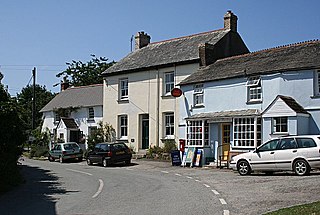
Chapel Amble is a village in the civil parish of St Kew, north Cornwall, England, United Kingdom. It is situated 2 miles (3.2 km) north of Wadebridge next to the River Amble, a tributary of the River Camel. The oldest part of the village lies on rising ground facing south-east across the river.
St Kew is a village in Cornwall, England, United Kingdom. It is also the name of the civil parish, which includes the church town, St Kew, and nearby St Kew Highway.

Gwennap Head is a headland on the south coast of the Penwith peninsula, Cornwall, United Kingdom. It is within the parish of St Levan and approximately 4 miles (6.4 km) south of Land's End, and less than 1 mile (1.6 km) north-west of Porthgwarra, the nearest village. The area of Gwennap Head is designated as part of the Penwith Heritage Coast and also designated as part of the Cornwall Area of Outstanding Natural Beauty. The South West Coast Path closely follows the coastline around the headland.

Teän is an uninhabited island to the north of the Isles of Scilly archipelago between Tresco, 1.5 kilometres (0.9 mi) to the west, and St Martin's, 300 metres (330 yd) to the east. Approximately 16 hectares in area, the island consists of a series of granite tors with the highest point, Great Hill, rising to 40 metres (130 ft) at its eastern end. The low-lying land is overlain with glacial till and outwash gravels with glacial erratics abundant on the north coast beaches, which indicates the southern limit of outwash from an ice sheet for which it is designated a Geological Conservation Review site.
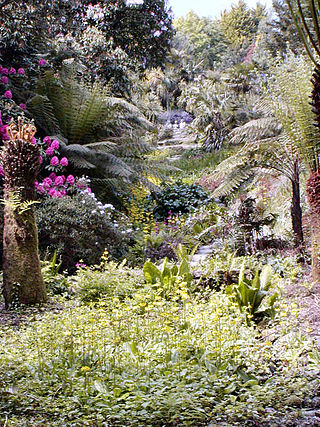
Cornwall is the county that forms the tip of the southwestern peninsula of England; this area has a mild and warm climate regulated by the Gulf Stream. The mild climate allows rich plant cover, such as palm trees in the far south and west of the county and in the Isles of Scilly, due to sub-tropical conditions in the summer.

William Wagstaff, commonly known as Will Wagstaff, is a British ornithologist and naturalist in the Isles of Scilly, and also an author. His popular guided wildlife walks have made him both a well-known and popular figure in the islands. Originally from South Wales, Wagstaff has lived on the Isles of Scilly since 1981. He has had an active role in conservation work around the islands for more than 20 years, and has led guided wildlife walks there since 1985. He is currently Honorary President and Chairman of the Isles of Scilly Bird Group and regularly presents slideshows and leads other events on the islands. He also writes a regular column A Walk on the Wild Side for the local magazine Scilly Now & Then. He is a Tour Leader for Island Holidays and runs the Island Wildlife Tours group. He is part of the Travelling Naturalist group.
Marazion Marsh is a Royal Society for the Protection of Birds (RSPB) reserve situated in a shallow river valley, half a kilometre to the west of Marazion, Cornwall, UK. It is separated from the coast by a shingle bar and small sand dune system and contains Cornwall's largest reed bed.
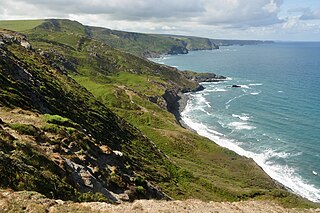
Boscastle to Widemouth is a coastal Site of Special Scientific Interest (SSSI) in Cornwall, England, noted for its biological and geological characteristics. The Dizzard dwarf oak woodland is unique and of international importance for its lichen communities, with 131 species recorded.

Porthgwarra to Pordenack Point is a coastal Site of Special Scientific Interest (SSSI) in west Cornwall, England, noted for its biological characteristics. The South West Coast Path runs through the SSSI.
Operation Chough is a conservationist project which aims to create a viable population of red-billed chough in Cornwall. This bird is widely considered a symbol of the county and its people and was once commonly seen throughout Cornish landscapes. In spite of this close association, the chough population experienced a severe decline in Cornwall through the 20th century, and had not been seen in the county since the early 1970s. In 2001, however, up to five birds were seen on The Lizard, thought to have come from Ireland. This pioneer population rapidly grew, with their offspring reaching nearly twenty birds. Since then, the Operation has made several efforts to keep this population viable by monitoring the nesting areas, promoting awareness of the cultural and environmental importance of the species to Cornwall and by releasing birds to further enlarge the genetic pool of the pioneer communities.
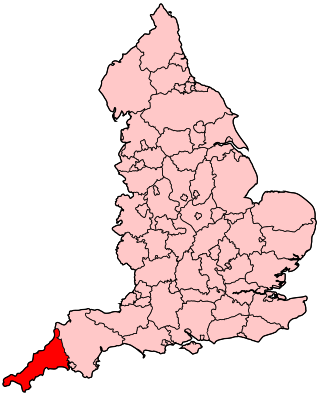
The following outline is provided as an overview of and topical guide to Cornwall: Cornwall – ceremonial county and unitary authority area of England within the United Kingdom. Cornwall is a peninsula bordered to the north and west by the Celtic Sea, to the south by the English Channel, and to the east by the county of Devon, over the River Tamar. Cornwall is also a royal duchy of the United Kingdom. It has an estimated population of half a million and it has its own distinctive history and culture.
Presented below is an alphabetical index of articles related to Cornwall:

The Cornwall BirdWatching and Preservation Society is a conservation body dedicated to the preservation and enjoyment of birds in the county of Cornwall, England, UK. The society is involved in the management of 6 reserves, and provides news of bird sightings in Cornwall through its website.
